Adapalene is one of the oldest and most effective topical treatments for acne and other skin concerns that have to do with abnormal skin shedding, such as keratosis pilaris.
But besides acne, adapalene can also be used to target signs of aging, including fine lines and wrinkles, as well as hyperpigmentation.
Some people actually prefer it to tretinoin or tazarotene because it’s less irritating and more stable.
Adapalene is so stable that it can be used in the morning due to the lesser concerns of potential photodegradation, which is something that you can’t do with tretinoin or other over-the-counter retinols.
Besides this, its stability also allows it to be combined with other acne treatments, such as benzoyl peroxide and salicylic acid.
It’s worth mentioning that using these actives together could lead to irritation, but some skins can take it, and there aren’t any serious risks in using them together if your skin can handle it.
There are currently two most popular products with the active ingredient adapalene in the market: Galderma’s Differin, which is the OG acne treatment, and La Roche Posay’s Adapalene, which stepped on the scene a couple of years ago and marketed itself as a gentler alternative to Differin suitable for even the most sensitive skin.
Having used them both for some time, I decided to write my thoughts on how they compare, how they are different, and, of course, which one is better.
This is my comparison review of La Roche Posay Adapalene Gel and Galderma’s Differin Gel.
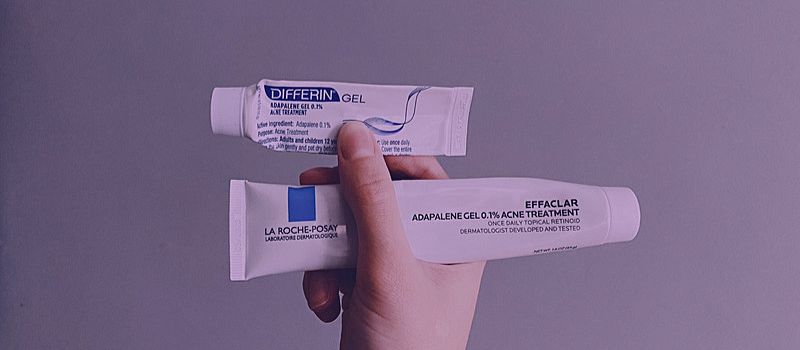
Galderma Differin Gel 0.1% Adapalene
Galderma’s Differin Acne Treatment Gel is the first and only FDA-approved full prescription-strength retinoid.
The acne treatment is available without a prescription in the US and is dermatologist-developed and tested.
Containing the active ingredient adapalene, the gel aims to minimize and get rid of both inflammatory and non-inflammatory acne, such as cysts, whiteheads, and blackheads.
It can also target signs of aging and improve some minor concerns, such as fine lines and hyperpigmentation.
Ingredients
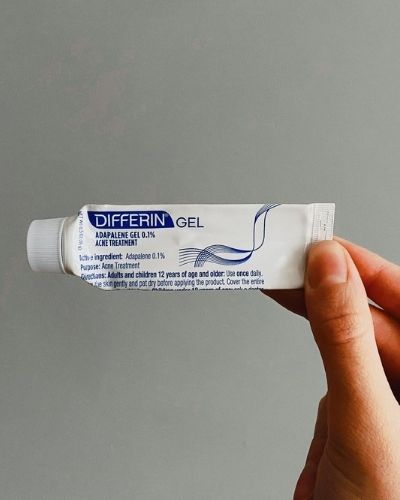
Differin Gel is a very straight-to-the-point product, and besides the active ingredient, it only contains a few more carbomers to provide thickness and viscosity to the formula and solvents to keep it stable for a long time.
Scent
Galderma’s Differin Gel doesn’t have any added fragrance or fragrant components, and it has no scent.
Performance
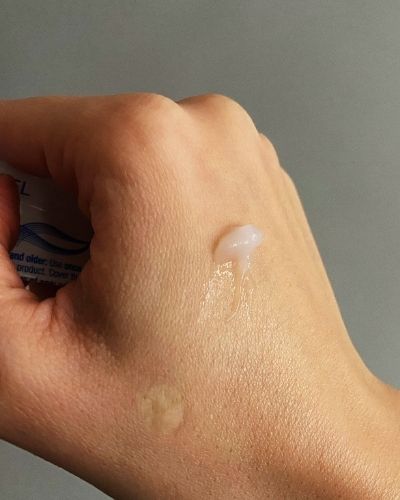
Adapalene treatments are only available via prescription in Europe; however, I managed to buy Differin through a pharmacy that didn’t ask for a prescription but charged me a slightly higher price than regular.
When first starting Differin, you are supposed to use it on clean, dry skin or after applying a thin layer of moisturizer as a medium to minimize potential irritation.
Therefore, when I first started using it, I applied Differin on top of my La Roche Posay Cicaplast Baume around three times a week.
My skin got used to it quickly, and I jumped from using it three times a week to using it every night after the first two weeks.
During this time, I didn’t experience any irritation or peeling; however, it’s worth mentioning that this is not my first experience with retinoids and that I wasn’t using other actives for at least three weeks.
I slowly eased into other actives, including salicylic acid and niacinamide, after three weeks of daily Differin use, and this is also about the time I started experiencing a minor purge.
Namely, my forehead and temples were a little bit bumpy, and I was also experiencing a few pustular pimples on my nose, cheeks, and chin. This is always the case for me when trying a new active that triggers purging, so it was expected.
It also wasn’t anything serious; however, I also had a great routine before starting Differin, so I wasn’t expecting anything major.
The purge was likely a mixed result of not exfoliating for three weeks and introducing a new active at the same time, as it started occurring at the usual time it normally would when starting a retinoid – three weeks after starting it.
This isn’t a rule, and a retinoid purge can start quicker for some people, but it usually takes about three weeks to kick off.
Other than that, I initially liked Differin’s texture and spreadability; however, my opinion on this changed when I tried La Roche Posay eight weeks later.
La Roche Posay Effaclar Adapalene Gel 0.1%
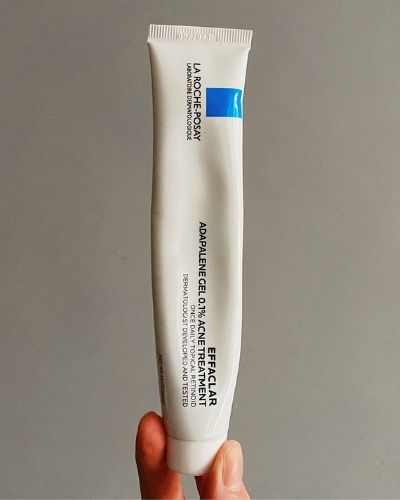
La Roche Posay Adapalene Gel 0.1% is the latter of the couple, and this product was launched just a couple of years ago.
It’s part of the brand’s Effaclar line, which is formulated for oily and acne-prone skin and includes everything from cleansers, toners, and serums, as well as benzoyl peroxide treatment and a clay mask.
Ingredients
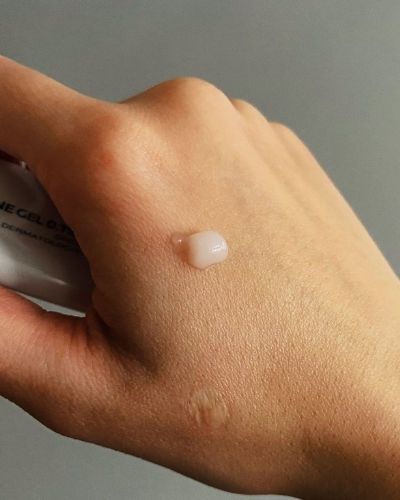
The Adapalene Gel treatment is a very straight-to-the-point product, and besides the active ingredient, it only contains a few more carbomers to provide thickness and viscosity to the formula and solvents to keep it stable for a long time.
Scent
The Adapalene Gel doesn’t contain any added fragrance or fragrant component, and it has no smell.
Performance

As I already mentioned above, adapalene treatments are only available via prescription in Europe; however, there are websites where you can buy them without a prescription, the way I purchased Galderma’s Differin to try it out.
That said, La Roche Posay’s Adapalene Gel was prescribed to me, and I asked my derm for a new prescription as I wanted to try it out for a review.
I started using La Roche Posay’s Adapalene Gel as soon as I finished the 15g tube of Differin that lasted me exactly eight weeks with nearly daily use, except for the first two weeks, when I used it only three times a week.
I had no initial irritation, redness, or sensitivity as I continued to use it over my La Roche Posay Cicaplast Baume for the first couple of weeks.
I also didn’t experience any new purging after switching from Differin to La Roche Posay’s Adapalene, and my skin just kept getting better.
Eventually, I decided it was time to start using it before my moisturizer at around the fourth week (plus the prior eight weeks of using Differin), and by this time, my skin was already used to the active ingredient, and I experienced no irritation at all.
I actually prefer La Roche Posay’s Adapalene Gel to Differin because it has a smoother texture that spreads easily on the skin and allows me to use less product for the entire face due to the better spreadability and slower drying process.
Differin is a little stiffer and doesn’t spread as easily as La Roche Posay because of the different carbomer.
I also find La Roche Posay’s Adapalene Gel to give me a nicer glow and softer skin compared to Galderma’s Differin, but that might be because I am experiencing the full effects of adapalene after using it for over three months, which is how long it usually takes for adapalene to give results.
And since both products are the same size and around the same price with only a $2 difference, I think I will stick to La Roche Posay’s Adapalene Gel because I prefer the texture and the beautiful glow it gives me.
What’s the Difference Between Galderma Differin and La Roche Posay Adapalene?
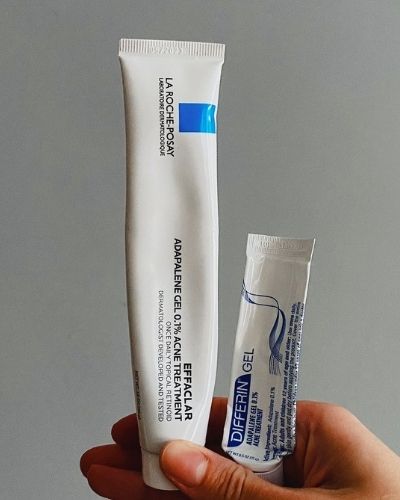
The only difference between Galderma’s Differin and La Roche Posay Adapalene is the different carbomer.
Differin has Carbomer 940 on its ingredient list, while La Roche Posay has Carbomer Homopolymer.
This carbomer is what makes La Roche Posay’s product smoother and more spreadable compared to Differin, but other than how the texture feels and spreads on the skin, they are basically the same product.
Carbomers are a family of crosslinked acrylic acid polymers and essential ingredients in numerous products, including pharmaceuticals, cosmetics, and personal care items; household, industrial, and institutional care products; printing inks; adhesives, and coatings.
Carbomers help build consumer-desired aesthetics into products, such as adding viscosity and texture while simultaneously stabilizing the products and making them last longer.
Carbomers are nontoxic and have little to no potential for irritation to the skin and eyes at the concentrations found in cosmetics and personal care products.
Due to their utility, reliability, and the occasional ability to rescue doomed product launches by stabilizing poorly conceived formulas against separation, carbomers have been described by seasoned product developers as “a formulator’s best friend.
Side Effects of Using Adapalene
While I personally didn’t experience any serious side effects from using Differin and La Roche Posay’s Adapalene, besides the negligent and short-lived purging, these two products can cause some initial adverse effects that many will experience when starting to use them.
Some of the main side effects of using adapalene include:
Dryness: This is the most common side effect of adapalene that occurs because the skin cells are being shed at an increased rate, leaving young and immature cells that are unable to keep moisture in the skin. Dryness can be reduced with the use of moisturizers, and it typically reduces after 4-8 weeks as the skin gets used to the active ingredient.
Skin Irritation: This is another common side effect of adapalene and includes redness, stinging, and even burning and can last for 2-3 weeks or until your skin gets used to the active ingredient.
Flaking and Peeling: This occurs as a result of the increased cellular turnover and the increased number of skin cells traveling to the skin’s surface, where they shed rapidly. It can last anywhere from 4-8 weeks.
Purging: In the first few weeks of using adapalene, your acne might appear to get worse because the active ingredient is pushing the clogs inside the pores that would’ve become pimples at different points in time – all at the same time. This will result in an increased number of pimples on the skin’s surface and can last anywhere from 6-12 weeks. If purging continues past the 12-week mark, chances are that you are either using the product incorrectly and are destroying your skin barrier, resulting in inflammation and more pimples, or your skin doesn’t accept the active ingredient, which is a sign that it’s best to discontinue adapalene use.
Allergic Reaction: Though rare, some people may have an allergic reaction to adapalene that can appear in the initial stage of introducing this active ingredient to your skincare regimen or even after months of using it without issues. Symptoms can include itching, swelling, redness, and discomfort. An allergic reaction is a sign that you should stop using adapalene.
Discoloration: Though rare, some people may experience temporary discoloration when introducing adapalene in their skincare routine. This can be due to adapalene exacerbating dryness, which will, in turn, make skin concerns such as discoloration and pigmentation temporarily more noticeable.
How to Minimize Adapalene Side Effects?
While the initial side effects of adapalene are common with most people who introduce the active ingredient in their skincare routine, there are some ways you can minimize discomfort.
Here are some tips on minimizing adapalene side effects:
Use Adapalene Correctly: A pea-sized adapalene is enough to cover the entire face; therefore, you don’t need to use more, as this will only exacerbate the initial side effects. Additionally, while adapalene is stable enough to be used in a morning skincare routine, it’s still better to use it at night when your skin is focused on regenerating itself. Finally, don’t use adapalene more than once a day, and always follow it up with a complete skincare routine that will help nourish and repair your skin.
Start Slowly: When introducing adapalene into your skincare routine, it’s always best to start slowly by using it 3-4 times a week. This will help your skin get used to the active ingredient while also giving it a short break in between application days to regenerate and repair any damage caused by the potency of the active ingredient.
Apply a Moisturizer: Applying a moisturizer before or after adapalene can help combat dryness and prevent irritation. Look for a non-comedogenic moisturizer that doesn’t contain components such as drying alcohol and irritating fragrances to prevent further discomfort.
Avoid Other Active Ingredients: Eliminate the use of exfoliating acids, benzoyl peroxide, vitamin C, or other over-the-counter retinoids while introducing adapalene into your skincare routine to avoid exacerbating the initial side effects.
Apply Sunscreen: Adapalene is a retinoid that increases cellular turnover; therefore, your skin may become more sensitive to the sun during the acclimation process. To avoid irritation, sunburns, skin damage, and discomfort, always apply a broad spectrum SPF of at least 30 or higher to ensure maximum protection.
Stay Consistent: The initial side effects of adapalene are temporary for most people and shouldn’t last longer than 12 weeks. Therefore, it’s important to stay consistent with your application and your complete skincare routine so that your skin gets used to the active ingredient and recovers from the initial adverse effects faster.

My name is Simone and I am a certified skin specialist. I created this website to teach my readers how to take great care of their skin and I also like to occasionally share my honest opinions on skincare products I’ve tried. You can learn more about me here.
